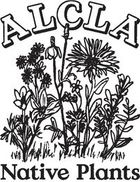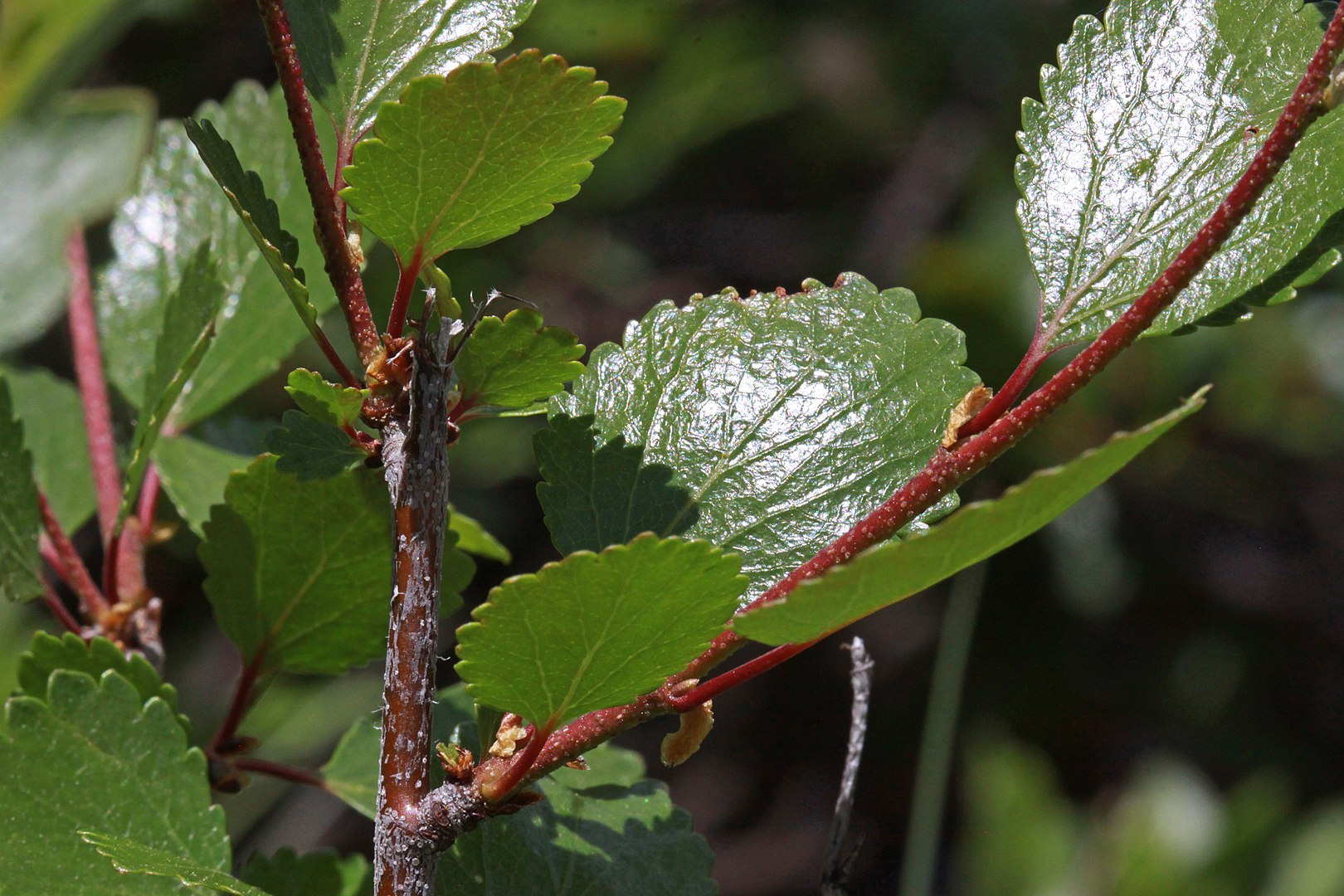This article, written by Ken Wright, first appeared in the Calgary Horticultural Society (Calhort) publication Calgary Gardening in 2013. It has been republished with permission and edited for clarity.
Calhort members receive full access to Calgary Gardening archives. To learn more visit www.calhort.org/
Dwarf Birch (Betula glandulosa) is one of our best-kept secrets. It is a native shrub that has attractive shiny green leaves, smoky grey winter bark, vibrant fall colour, great form, and a well-behaved nature.
Dwarf Birch has small, round leaves that are very delicate and lend a fine texture to the plant. They turn a variety of colours in the fall, ranging from orange to light red. This is different from our other birches that turn bright yellow in the fall.
Their winter effect gives smoky grey from the younger bark while the older interior wood is a deep dark red. The wood is often used in floral arrangements for winter and Christmas decoration. The heavily lenticular wood has an interesting texture and feel to it. The lenticels are taxonomic for birch in general; a feature consistent within the species.
Dwarf Birch is one of the few species that has the flexibility to perform well in full sun or partial shade. Because of this feature, the plant looks equally good in a wide variety of sites. The form—upright, roughly 2 m high and 1.5 m wide, with a dense, neat appearance—gives the plant great flexibility for landscape use. It will perform well as a hedge plant, replacing some of the more common introduced species [such as Cotoneaster, which is now listed as invasive in Alberta by the Alberta Invasive Species Council]. Dwarf Birch serves well as a specimen plant, having enough appeal to enhance any urban landscape.
It is interesting that the plant is not in the mainstream nursery market. With its drought tolerance and disease resistance, it would make sense and should be more common than it is. The shrub is not resistant to birch leaf miner, but is very tolerant of any damage caused by this insect. Here is a fine example of a native insect and a native plant co- existing in harmony.
The spring flower is a very subtle green catkin which gives rise to non-persistent, small dark brown catkins in the fall. The seeds shed gradually through the winter, providing food for small nutlet eating birds.
The more common name for this plant, ‘Bog Birch’, is somewhat misleading, as it performs well in both dry and wet sites. In areas of extra or standing moisture, it performs well but it is not a requirement for success. The plant moves out of its native habitat and seems quite content in a wide variety of exposures. Deer and rabbits do not seem to care for the taste of this shrub.

